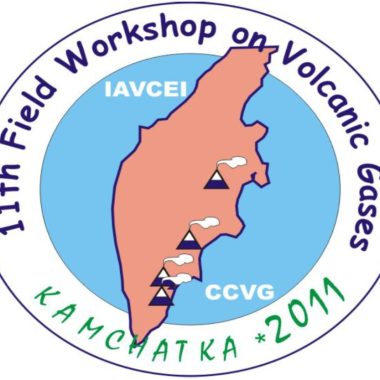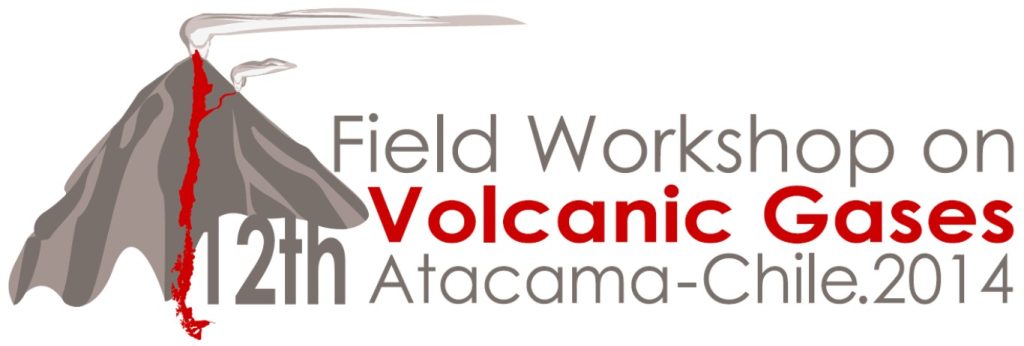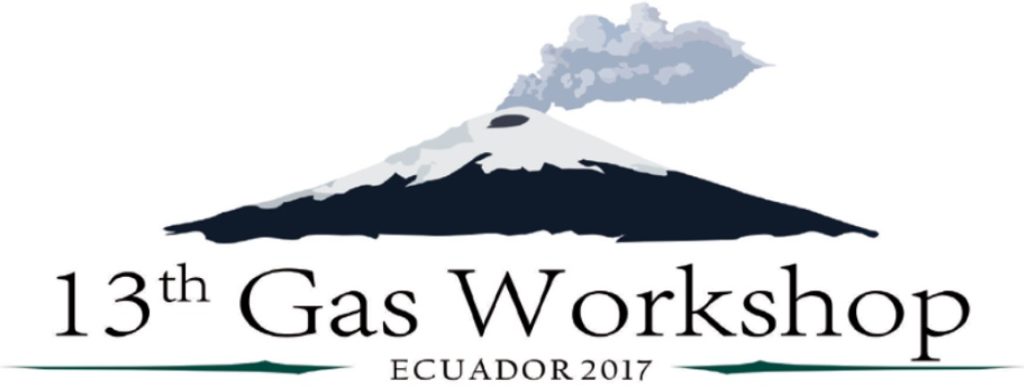11th Field Workshop Kamchatka Russia

The 11th workshop was held at Kamachatka Russia between the 1st to the 10th of September. The field workshop was sponserd by the Deep Carbon Observatory (DCO). During the main conference a total of 39 absracts were presented.
For the absdtract see the following attachment.
The programme included a scientific meeting focused mainly on geochemistry of volcanic gases. The main topics were: 1.New techniques, including sample collection, lab analysis and field spectroscopy, for measurement of inorganic, organic gas and aerosol composition (including isotopes) of fumaroles, diffuse emissions and plumes; 2. Modelling frameworks for interpretation of volcanic (magmatic) fluid geochemistry; 3. Atmospheric chemistry of volcanic plumes; environmental and human health impacts of volcanic degassing; 4. Measurements of volcanic plumes using space-based remote sensing; 5. Deep Carbon Observatory session. Discussion about long-term monitoring of volcanic gas emissions and a global gas monitoring network.
Field works grouped around: 1. Direct sampling and remote sensing of gases emitted from fumaroles at Mutnovsky volcano; 2. Measurements of soil degassing at Mutnovsky geothermal field; 3. Plume Measurements at Gorely volcano. On the last the group was transported via helicopter to Karymsky volcano. During this day remote measurments and sampling of thermal springs at the Karymsky volcano was undertaken by teh group.
For furtehr informations see the full program and the 2nd circular of workshop.
As an outcome of teh 1tth gas workshop, was the DECADE (Deep Earth Carbon Degassingh Project) initiative by the DCO. The main goal of the DECADE project is to refine estimates of global carbon outgassing using a multipronged approach. Specifically, the DECADE initiative unites scientists with in expertisen geochemistry, petrology and volcanology to provide constraints on the global volcanic carbon flux by 1) establishing a database of volcanic and hydrothermal gas compositions, 2) building a global monitoring network to continuously measure the volcanic carbon flux of 20 active volcanoes, 3) measure the carbon flux of remote volcanoes, for which no or only sparse data are currently available, 4) develop new field and analytical instrumentation for carbon measurements and flux monitoring, and 5) establish formal collaborations with volcano observatories around the world to support volcanic gas measurement and monitoring activities.
12th workshop Chile

The 12th workshop of the Commission of the Chemistry of Volcanic Gases (CCVG) was held between 16-28 November, 2014, in northern Chile. The meeting was attended by 69 participants from 18 countries, and supported by the International Association of Volcanology and Chemistry of the Earth’s Interior (IAVCEI) and the Deep Carbon Observatory (DCO). The meeting consisted of the main conference session in Copiapó (17-18 November) with oral and poster presentations, a field expedition to Lastarria volcano and El Tatio geothermal field attended by most participants. An additional optional field trip to Lascar volcano was also carried out. The meeting was also preceded by an informal meeting on plume imaging (13-14 November, 2014) focusing on UV and IR camera techniques in Santiago.
The first field expedition was conducted at Lastarria volcano (5,697 m a.s.l.) and was attended by most participants, with the aim of comparing measurements. Field work at Lastarria was highly challenging, with many participants suffering from altitude sickness despite a day of acclimatization at base camp. However, most of the goals for direct sampling and remote sensing measurements were accomplished. Two “official” fumaroles of ~180°C and ~260°C were sampled by various groups, remote sensing measurements by UV camera, driving/walking DOAS traverses were conducted, and diffuse gas measurements were obtained. The second part of the field trip focused on El Tatio geothermal field (4,290 m a.s.l.), where another “official” fumarole (~85°C) was sampled and diffuse gas measurements were conducted.
The field trip to Lascar volcano (5,592 m a.s.l.) provided an additional opportunity to conduct measurements under challenging conditions. These mostly consisted of remote sensing SO2 flux measurements, as the fumaroles within the crater are logistically challenging and dangerous to access. The field expeditions and extensive travel times resulted in many fruitful discussions and ideas for future collaborations, as well as an opportunity for veterans in gas chemistry to share their extensive knowledge with young scientists.
For the firtehr infomation please see: the 1st circular, the Field Guide, the Book of Abstracts and the report.
13th workshop Ecuador

The 13h workshop of the Commission on the Chemistry of Volcanic Gases (CCVG) was held from September 24th to October 3rd, 2017, in Ecuador. The meeting was attended by 67 participants from 19 countries, and supported by the International Association of Volcanology and Chemistry of the Earth’s Interior (IAVCEI). The meeting consisted of a main conference session held in Baños (25-27 September) with up to 23 oral and 42 poster presentations, and field expeditions at (1) the main thermal spring sites at the foothill of Tungurahua volcano (28-29 September), (2) Guagua Pichincha volcano (2 October), (3) Pululahua caldera (2-3 October), and (4) Cotopaxi volcano (2-3 October). Optional field trips to El Reventador volcano (20-23 September; 16 participants) and Galápagos Islands (5-9 October; 20 participants) were also carried out, as well as half-day seminars on different measurement techniques.
Scientific topics addressed in the oral and poster presentations represented a wide variety of volcanic gas studies, including regional studies, in-depth investigations of individual volcanic systems, new methodologies for gas studies and other topics related to volcanic gas emissions. The conference was opened by an overview presentation on volcanoes and gas monitoring in Ecuador, followed by oral presentations classified under four scientific sessions: (1) Observations and interpretations; (2) Technical development; (3) Volcanic gas impact and (4) Multidisciplinary. The full program with titles, abstracts and main authors is appended to this report.
The general seminars were divided in three sessions, covering different aspects of direct sampling, diffuse degassing and remote sensing. They were presented by experts on different methodologies and were directed to both expert colleagues and new-comers to the techniques.
Prior to the field activities sessions were arranged in Baños and Quito for general planning of the logistics and calibration or preparation of equipment. The first general field expedition was conducted at thermal springs located at the base of Tungurahua volcano and was attended by most participants, with the aim of comparing sampling techniques and measurements on CO2-rich gases collected from bubbling pools. Three thermal sites were selected for the workshop: El Salado (47°C), Santa Ana (44.4°C) and La Virgen (54.4°C). The sampling activity consisted of the collection of Giggenbach-type flasks, dry gas samples and water samples.
During the sampling of the spring the diffuse degassing group conducted diffuse measurements along a transect in order to calibrate the detectors for the Pululahua caldera campaign.
The fieldwork at Guagua Pichincha was very challenging, with many participants suffering from altitude sickness and exhaustion (altitudes above 4500 m asl and technically difficult climbing). However, all the goals for direct sampling measurements at one fumarole, elected as the official CCVG fumarole, called “La Pichincha” (~89°C), were achieved. A seperate group in addition, collected samples from air affected by fumarole emission, with different sampling devices (e.g. denuders and alkaline traps).
The field trip to Reventador volcano provided an additional opportunity to conduct measurements under challenging conditions. These mostly consisted of remote sensing SO2 flux measurements. A camping was organized inside the Reventador caldera in a very remote and highly vegetated area. 16 participants were able to see the volcano during 2 complete days. Weather conditions, despite some cloudiness were quite nice considering that the region is characterized by a very high humidity and strong rain. Here, in addition to the remote sensing techniques used to measure the gas composition of the plume, water samples were collected from a blue-milky ravine flowing close to the camping site.
Fieldwork at Volcán de Azufre volcano was conducted by 20 participants on the 6 October. This started with a ca. 12 km long walk to reach the fumarolic field, under dry and hot conditions. At the sampling site three active fumaroles were studied with remote sensing and direct sampling were conducted.
For further information see teh 3rd circular, general informations, the final program and the report.
